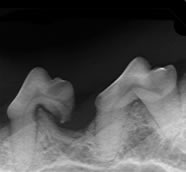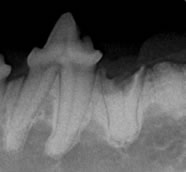
Dental Care
Your pet’s world revolves around its mouth.
Regular dental care from an animal dentist is essential for keeping your pet healthy and happy. Dental disease is a common issue among household pets that can lead to serious health problems if left untreated. Periodic dental exams by a pet dentist help maintain proper oral hygiene and prevent future complications.
Glendale Animal Hospital offers complete pet dentist services, features include:
- Annual Dental Cleanings
- Preventative Dental Care
- Emergency Oral Services
A Proper Dental Routine Can Add 3-5 Years to Your Pet’s Life
Just as oral health is an important part of our general health, our pets are also affected by oral disease. Recent studies have shown that an astonishing 85% of dogs and 70% of cats have oral disease by age three.
Pet Dental Care in Glendale Heights, IL
Periodontal disease is a serious condition that starts out as a bacterial film, called plaque, that attaches to the teeth. If not removed through regular brushing, plaque spreads below the gum line, leading to inflammation of the gums and tooth root infections. The bacteria associated with oral disease can spread through your pet’s bloodstream and cause damage to other organs such as the heart, liver, and kidneys.
Unlike human patients, we cannot ask our canine and feline companions to sit still and open wide during their professional dental cleaning. That is why we utilize the safest anesthetics available to keep your pet comfortably asleep during the procedure. Without anesthesia, there is no way to properly clean, scale, and polish your pet’s teeth and gums. The good news is that your veterinarian can remove years of plaque and tarter build up and, if necessary, extract broken or infected teeth that would have caused your critter pain and other problems down the road.
Canine Dental Disease
Although some canine breeds have a genetic predisposition to dental disorders, all dogs are susceptible to the effects of periodontal disease. There are many factors that affect the development of dental disease in dogs, including age, diet, spacing of teeth, lack of oral hygiene, and chewing habits. Periodontal disease is a progressive condition that can lead to loose teeth, abscesses, bone loss, and infection. In severe cases, bacteria can enter the bloodstream and cause infection of the heart valves (endocarditis), liver, and kidneys. Schedule with our dog dentist today!
What are the Signs of Dental Disease
- Tartar and calculus (yellow-brown discoloration on the tooth)
- Gingivitis (red, swollen, or bleeding gums)
- Oral odor (dogs and cats should not have bad breath)
- Loose or missing teeth
- Loss of appetite
- Difficulty eating
- Increased drooling
- Pawing at the mouth
Feline Dental Disease
Feline odontoclastic resorptive lesions (FORL) is a very common oral disease seen in cats over the age of two. By the age of five, the American Veterinary Dental Society estimates that 72% of cats have at least one tooth affected by FORL.
The disease can be compared to cavities in humans—cells known as odontoclasts start attacking the tooth enamel along the gum line or “neck of the tooth.” As the tooth structure dissolves, a cavity or hole will develop, exposing the sensitive root canal. If left untreated, the tooth will break off. Eventually the gum tissue will grow over the root, encapsulating the painful lesion. This process can take weeks or months of oral pain to resolve. If you have ever had a tooth fracture or a deep cavity, you will understand what your feline friend is experiencing.
Signs That Your Kitty Might Have FORL Include:
- Increased drooling
- Red or pink spot on tooth at the gum line
- Difficulty chewing or chewing on one side
- Wincing or chattering of teeth when area around mouth is touched
- Uncomfortable eating or preference for canned over dry food
- Many cats will have no outward signs since they are adept at hiding pain and the painful tooth has become their “baseline”
Prevention is the Best Defense Against Dental Disease
The most effective way to maintain your Unhealthy mouth is with proper dental care, which includes regular veterinary dental checkups, home oral care, and professional dental cleanings as needed. Starting a routine of good dental hygiene early in your pet’s life is essential to his or her overall health; however, cats and dogs can learn to accept daily brushing at any age.
Dental X-Rays are an Essential Part of a Complete Dental Cleaning
70% of Gum Disease Lies Below the Gum Line Where it Cannot be Detected Without X-Rays
Like an iceberg in the Arctic Ocean, many of the indications of dental disease are hidden beneath the gum line. Digital dental X-rays (also known as radiographic imaging) are an important tool in diagnosing and treating dental conditions. They allow our veterinarians to assess the heath of your pet’s mouth from the insides of the crowns, roots, and tissue under the gum line. For example, a tooth with a chipped crown may have healthy internal structures and roots and require no treatment; while a normal appearing crown with inflamed gum may show advanced root infection, requiring removal of the tooth to avoid ongoing pain.


Dental X-rays are vital in the diagnosis of periodontal disease. Radiographic imaging aids in the discovery of bone density loss around tooth roots, indicating the early phases of the disease. In more advanced stages, tooth extraction determinations can be made by evaluating the loss of bone support around the root of the affected tooth.
Other Indications In Which Dental X-Rays May Be Recommended
- BROKEN TEETH – Signs of root tip infection can be determined
- DISCOLORED TEETH – Evaluation of the pulp chamber for indications of root tip infection
- SWELLING ON THE FACE UNDER THE EYE – Determine if there is an infection of the root tip or cystic teeth
- RESORPTIVE LESIONS (CAVITIES ALONG THE GUM LINE) – To assess changes in the tooth root and surrounding bone tissue
- ORAL TUMORS – Determine if there is bone involvement
- PRE- AND POST TOOTH EXTRACTION – Ensure that all the roots have been removed
- MISSING TEETH – Ensure there are no roots or tooth fragments below the gum line
- ORAL SURGERY – Determine the presence and/or extent of oral fractures and assess margins for oral tumor surgery
- FULL MOUTH SERIES – Ensure that all teeth, roots, and bone appear healthy.
Pet Dentist Services Near you
To make an appointment for a dental exam or cleaning, call us at 630-858-3530 or schedule online.
